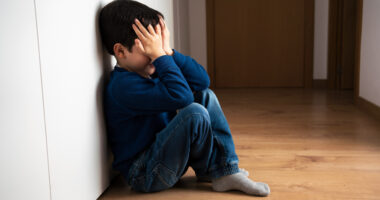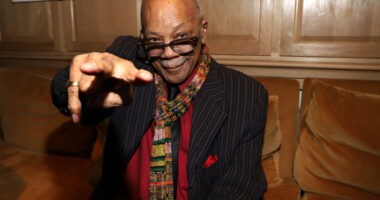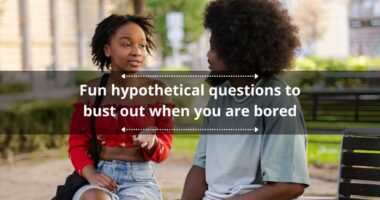A mom of four spoke to PEOPLE about her family’s difficult decision to place their adopted daughter with a new family equipped to handle her special needsThe topic of adoption dissolution was recently discussed in the new three-part docuseries An Update on Our Family, which revisits YouTubers Myka and James Stauffer’s controversial choice to re-home their adopted son, HuxleyThe mother — who asked to remain anonymous — also wrote a parenting blog, where she documented her adoption journey and some of her struggles with the child, who was later diagnosed with reactive attachment disorder A former family blogger opened up to PEOPLE about her family’s struggle to properly care for their adopted 3-year-old child, who was later diagnosed with a behavioral condition that particularly affects adoptees. The mother of four biological children — who requested her identity be kept anonymous to “protect her children” — shared what led her to seek out adoption dissolution in front of her audience of invested readers. The web-based author knew only the basics about her 3-year-old’s health at the time of her adoption from Eastern Europe in 2009. And based on what they knew, the family wasn’t worried about their capacity to care for another toddler. “We were going off the information that we had,” the mom recalls. “We were like, ‘Oh, she’s three. We know how to do this.’ ” Looking back, she tells PEOPLE that no one prepared her for the behavioral variability that set her adopted daughter apart from her biological children. The family wouldn’t learn about reactive attachment disorder (RAD) until well after they brought their new addition home. Though the blogger says that’s often the case with RAD, which is defined by a child’s lack of attachment with their caregivers. “There’s a honeymoon period,” she explains, detailing how the young girl ate “anything we gave her” and enjoyed trying new foods during her early days with the family. “For the first six months after she got home, everything was fine. But now in hindsight, looking back with what we know now about RAD, that’s typical.” Though she had no way to foresee the symptoms of RAD, the mom speculates that her daughter’s condition may have been triggered early on, when she was separated from her new father soon after the adoption. Never miss a story — sign up for PEOPLE’s free daily newsletter to stay up-to-date on the best of what PEOPLE has to offer, from juicy celebrity news to compelling human interest stories. During the prolonged waiting period following the adoption, the parents decided that the blogger would return home to care for their other four kids in the United States. Her husband — who was employed by the military at the time — remained in Eastern Europe until their adopted child was able to leave her native country. “I do feel like maybe she bonded a little bit with him there,” the mom reflects, adding that the father and daughter didn’t have much more time together once they arrived in the U.S. “He was home for a few more weeks, and then he deployed and left.” She continued, “That maybe set off a string of abandonment feelings in her. It’s hard to know because she couldn’t verbalize that … but I do feel like that was a mistake that we made.” Then “a switch flipped,” as the experienced mom describes it. The 3-year-old began to show alarming signs of instability, like refusing to eat and biting her fingernails. “I’d take her to the doctor and I would say, ‘She’s chewing her fingernails off. Her fingers are getting infected, and I don’t know what to do. She’s doing it in her sleep. I can’t stay up 24 hours a day to monitor this,’ ” the blogger recalls to PEOPLE. Following medical advice, she tried a number of remedies for fingernail biting, from placing socks over her daughter’s hands to painting on polish with a taste meant to deter teething. Nothing seemed to work, and doctors offered little helpful advice, insisting that the girl was only “self-soothing.” “I even had one doctor say, ‘Well, you just tore her out of the only home she’s ever known, and now you’re taking away her only comfort mechanism. How dare you?’” the former adoptive parent recalls. “I was like, ‘I’m not trying to be mean, I’m trying to help her. She can’t have infected fingers. It’s going to go into her bloodstream and she’s going to get sick.’ ” Then the young girl’s anxious behavior began to affect her four siblings, who were ages 3, 6, 8 and 10 at the time of their sister’s adoption. “She was taking it out on the other kids. I just remember one of my older kids coming home from school one day, and she had destroyed their bedroom. My older child was holding all their stuff and just had tears running down their face,” the mom says. “I mean, I get toddlers do that, but it was just different. It just seemed so malicious.” She blogged throughout both her daughter’s honeymoon period and the emotionally taxing period that followed. The author says she wasn’t making much money from her site, but it served as an outlet for her heavy emotions during such trying periods of parenthood. “I was doing it more for … adoption awareness and a chronicle of our family life too,” she explains. “We had a lot going on at the time with all the kids, and one of my kiddos had leukemia, and so I blogged through that as well.” That’s not to say the parent documented everything that happened in her household at the time. She wanted to be honest with her audience and offer a real insight into parenthood, especially as she navigated her kids’ disabilities, but she wasn’t interested in publicizing everything that happened at home. “I tried to find a good balance of reality versus not invading privacy for all of them,” she explains, noting that she omitted some of the most difficult stories about her adopted daughter. “I didn’t say, ‘Hey, she’s coming in and she’ll stand in the doorway for 45 minutes after we get home and refuse to move, and if we touch her, she screams.’ I’m not going to put that on my blog for everybody to read.” As the girl continued acting out, her other symptoms of RAD worsened as well, though her parents were still unaware of the condition. Their family crisis reached a fever pitch when one doctor noticed the toddler’s weight loss, a consequence of her refusing to eat, and called Child Protective Services. “That’s when I lost my mind because I was like, ‘I am going to lose all my children, and I’m doing everything I can for this little girl. What do I do?’ ” the mom says of the helpless situation. When the adopted daughter was 7 years old, the parents decided they needed to “regroup” and placed her in respite care. Since the blogger was actively involved with a community of adoptive parents, they were able to find a family to look after the girl for a few weeks. Her temporary caretakers were already parents to several other adopted kids, and they maintained that the girl was safe in their home and insisted her adoptive family take the break that they needed. “During that time, we saw our kids just be able to breathe and be able to feel safe in their home again and be able to not have to walk on eggshells,” the anonymous parent says. The family was in constant contact with their daughter’s respite caregiver, who eventually shared their belief that the girl had RAD. The temporary guardian had extensive experience parenting adoptees diagnosed with the behavioral disorder. “She said, ‘I feel like I am okay with not being a mother to some of them if I need to be. I can just be a caretaker. I can separate that,’ ” the blogger says. “And I was like, ‘Well, that’s good because I can’t … All I want to do is bring her home and love her and be her mom, like I am to the others.’ ” The respite host explained how many orphanages and doctors failed to recognize RAD in adopted children, hence why the girl’s mom struggled to receive help or a fitting diagnosis. Equipped with new information, the family decided to discuss their next steps. The parents started by asking their children what it would mean if their adopted sibling rejoined the family. “They said, ‘We just got our parents back. We’re just feeling settled again. We’re just feeling happy again,’ ” the mom recalls of the conversation with her four other children. Her daughter’s respite caregivers were open to extending the girl’s stay to a six month trial period. Her original family checked in regularly to make sure the girl was happy and healthy, as her stay was still meant to be temporary. Then she bonded with another girl in the house who also had a reactive attachment disorder diagnosis, and the family couldn’t break up the first relationship she had ever formed. The parents made the difficult decision to prioritize the child’s needs and seek out adoption dissolution and permanently placed the child in her new home. “She’s much happier there,” says the mom of four, who is still in touch with the girl’s caregivers. “A lot of times kids with RAD view that family that has taken them out of that orphanage as the enemy. Like, ‘You removed me from my home.’ … They don’t understand, ‘Oh, you’re going to give me a better life.’ ” Though the family felt that adoption dissolution was the best option for them, they received a significant amount of backlash from blog readers. The most hurtful comments suggested that the family “re-homed her like a dog” and “gave up on her too soon.” “When I made the blog post saying that we signed adoption papers over to her new family, I actually had a friend moderating the comments on that post because I knew my heart couldn’t take it,” the mom recounts to PEOPLE. “I also turned off anonymous comments on that post. I thought, ‘You know what? If you are going to be hateful, leave a name to it, own it.’ ” The writer says she expected people to judge regardless of whether or not they had experience in similar situations. “When I was young and before I had kids, I was the best mom in the world,” the writer tells PEOPLE. “I’ve learned to just let the people that are going to hate hate and walk away from it.” She stopped blogging soon after the dissolution, but the mom says she did receive positive encouragement as well. The adoption community was especially supportive, as people were becoming aware of RAD and trying to further understand it. The mom adds that the greatest comfort came from the readers who knew the family personally and witnessed their effort to help their adopted daughter. “The close friends that knew my journey said, ‘We get it. We’ve walked this with you. We’ve seen the things that you haven’t posted and we’re here,’ ” she says.
Subscribe
Login
0 Comments





